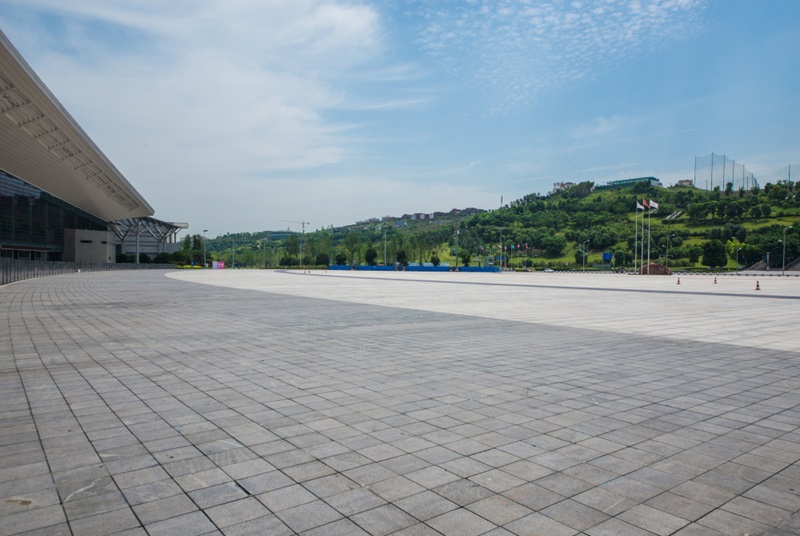Who said concrete pavers are dull and commonplace? Who declared they belong only in industrial and public spaces? And who confined them to the realm of pavement architecture and never thought of bringing them into cosy private interiors? Friends, it’s high time we challenged these outdated notions! In this blog post, we will delve into the world of innovative designs with concrete pavers, bringing you up to speed on an architectural design revolution that’s turning the tables in contemporary home decor.
Concrete pavers aren’t just square grey blocks anymore. Designers and homeowners alike are redefining what pavers can stand for, daring to break stereotypes and stepping into a world of limitless possibilities. From backyard paths to living room floors, kitchen countertops to bathroom walls – you can find pavers pervading every space. So buckle up as we explore this design frontier.
We’re challenging the dated perceptions surrounding concrete pavers by exploring innovative designs, identifying the geniuses behind these creations, understanding the why’s and how’s, plus examining both benefits and drawbacks. You’ll come away with concrete ideas (pun intended) to guide your home improvement ventures in an exciting new direction.

The WHY behind the Paver Revolution:
Today’s environmental challenges call for sustainable solutions. Traditional floor coverings and ceramics are not without their footprints. Could sheer, humble concrete pavers be our saviour? Changing climate conditions are demanding robust solutions that are cost-effective, durable, and visually appealing.
Concrete pavers tick all these boxes and more. They’re versatile, require minimal maintenance and are easy to install. More so, they’re recyclable, thereby space and waste efficient. Also, advancements in concrete technology now allow a wide range of colours, textures and patterns.
Furthermore, the demand for green buildings and LEED certification is driving architects and homeowners towards concrete pavers. So is the quest for uniqueness in home interiors that flaunt a personality, rather than a designer label. Supported by these broad trends, the rise of innovative designs with concrete pavers was inevitable.
The WHAT: Innovative Design Examples
Now, let’s demonstrate the innovation we’re discussing with a few concrete examples (pun intended, again).
Designers are now emulating the appearance of natural stone, brick, or clay using pavers, thanks to advancements in moulding techniques and colour pigments. Some pavers are even being designed to mimic hardwood for indoor flooring applications.
A fireplace surrounded by decorative concrete pavers might raise eyebrows, but would undoubtedly serve as a conversational centrepiece. Concrete pavers have also made their way into bathroom showers, providing an industrial, yet elegant look that’s gaining popularity.
For environmental enthusiasts, permeable pavers that allow water to seep through are a step towards sustainable living. Light-embedded pavers for walkways are no longer sci-fi but a glow-in-the-dark reality!
The WHEN: The right time for Paver Innovation
Timing is crucial for any home improvement. Concrete pavers can be installed year-round, with adequate preparation. However, the best time is often spring or summer when frost is not an imminent danger.
While renovating or refurbishing, consider the practical and aesthetic benefits of concrete pavers. Whenever you wish your home or outdoor space to stand out, reflect sustainability, offer durability, or exude a certain industrial charm – it’s time to turn to concrete pavers.
The WHO: Meet the Mavericks
Designers like Adam Goodrum, Greg Hatton, and a multitude of nameless artisans are playing with colours, shapes, finishes, and sizes to redefine concrete as a medium, thereby pushing the paver envelope. They’ve combined their creativity, technical knowledge, and artisanal skills, forging a path that many homeowners are now taking with confidence and gusto.
The PROS and CONS:
The pros of concrete pavers are many – durability, versatility, cost-effectiveness, easy installation, and maintenance. They’re also eco-friendly and recyclable, lending to their growing popularity in green building.
On the downside, concrete pavers are porous and prone to staining, especially light-coloured ones. Regular sealing can help counter this. Given their weight, transportation can be a challenge. Lastly, handcrafted, bespoke pavers might be significantly costlier than mass-produced ones.

Conclusion: Embracing the Concrete Paver Revolution
This design revolution, embraced by design mavens and homeowners alike, is more than just an intriguing aesthetic experiment. It signifies a conscious shift towards sustainability, functionality, and individualism.
Though concrete pavers may be perceived as a bold choice for some, their popularity indicates a larger willingness to break free from traditionalism and explore new design territories. Despite a handful of cons, the pros of using concrete pavers far outweigh them. The key lies in finding a skilled mason and the perfect design that resonates with your style.
Let’s embrace this concrete paver revolution, not as a mere fad, but as a viable, versatile, and vibrant design choice that’s here to stay. Here’s to pushing concrete boundaries and creating homes that are truly ‘set in stone’! So, are you ready to step on this path of innovation?


